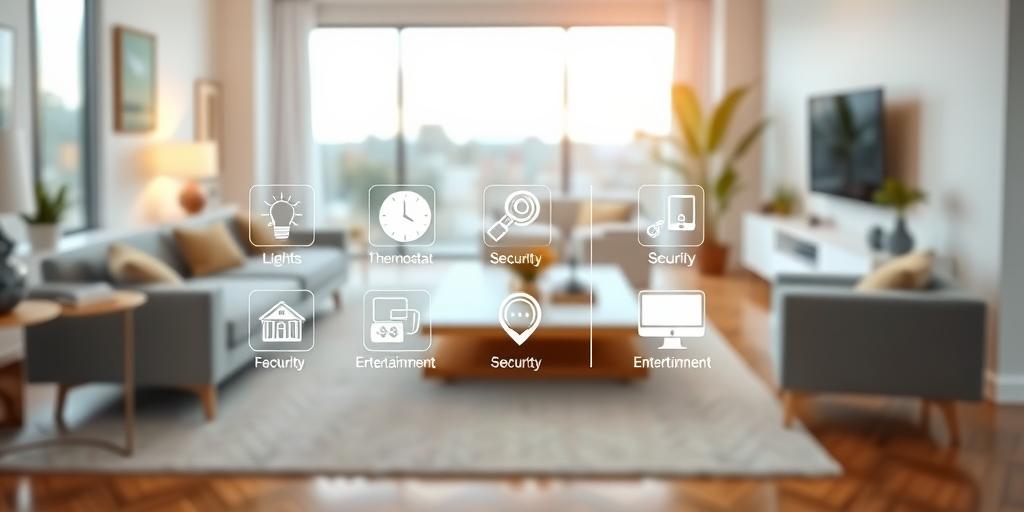Want to transform your home into a futuristic haven of automated convenience? Dive into the exciting world of smart home technology! This comprehensive guide will walk you through everything you need to know about setting up and managing an IoT smart hub, from choosing the right hub to mastering advanced automation techniques. Get ready to unlock a new level of home control and efficiency – it’s easier than you think!## Choosing the Right Smart Home Hub for Your Needs
The first step on your journey to a smarter home is selecting a suitable smart home hub. Don’t worry, it’s not as daunting as it sounds! The best smart home hub for you depends on your specific needs and preferences. Consider these factors:
Compatibility: The Key to Seamless Integration
Before you buy, ensure your chosen hub is compatible with the smart home devices you already own or plan to purchase. Check for compatibility with popular platforms like Amazon Alexa, Google Assistant, Apple HomeKit, and others. The last thing you want is to invest in a hub that doesn’t play nicely with your existing devices. Compatibility is king in this realm!
Features: Unlocking a World of Smart Home Possibilities
Smart home hubs offer a wide array of features. Some common functionalities include: voice control, remote access (using your phone or computer), app-based automation, energy monitoring, security integration, and multi-room audio capabilities. Think carefully about the features that are most important to you, and choose a hub accordingly.
User-Friendliness: Making Smart Home Management a Breeze
Your hub’s interface will be your gateway to controlling your smart home. A user-friendly interface with intuitive navigation and clear instructions is a must. You don’t want a complicated setup process to derail your smart home goals. Look for options with excellent user reviews and tutorials.
Budget: Finding the Perfect Balance of Price and Features
Smart home hubs are available at various price points. While some high-end hubs boast more advanced features, budget-friendly alternatives provide excellent value without breaking the bank. Set a budget before you start shopping and stick to it! You don’t need every bell and whistle to enjoy the benefits of smart home technology.
Setting Up Your Smart Home Hub: A Step-by-Step Guide
Once you’ve chosen your smart home hub, setting it up is relatively straightforward. Most hubs guide you through the process, making it easy to get connected.
Unboxing and Initial Setup
Start by unboxing your hub and following the manufacturer’s instructions. You will most likely need to connect it to your home Wi-Fi network. Your hub will often guide you through the necessary steps via its accompanying app. It’s a relatively painless setup.
Connecting Your Smart Devices
With your hub connected, start adding your smart devices, one by one. This typically involves discovering and pairing devices through the hub’s app. Each device will have its own connection procedure; it is wise to refer to each device’s own documentation as needed.
Testing Your Connections
After connecting all your devices, test everything thoroughly. Turn them on and off using the app, check automation routines, and experiment with voice commands if your hub supports them. Make sure it all works as expected!
Mastering Smart Home Automation: Unlocking the Full Potential
Smart home automation is where the real magic happens. You can automate almost anything imaginable, ranging from lighting and temperature control to security systems and entertainment setups. Let’s explore some popular automation options:
Scene Creation: Setting the Mood with a Single Tap
Create custom scenes to quickly adjust your lighting, temperature, and other devices with a single tap or voice command. Imagine setting a “Movie Night” scene that dims the lights, turns on the TV, and sets the thermostat to a comfortable temperature. The possibilities are endless and highly personalized.
Schedules and Timers: Automating Daily Routines
Automate daily routines by scheduling events to occur at specific times. For instance, you could schedule your lights to turn on at sunrise and off at sunset, or automate your coffee maker to start brewing before you wake up. It’s convenience made easy.
Advanced Automation with IFTTT and Other Services
For advanced automation beyond the capabilities of your hub’s built-in features, explore services like IFTTT (If This Then That). IFTTT allows you to create complex automations by connecting various smart devices and online services.
Troubleshooting Common Smart Home Hub Issues
Despite careful planning, some things might go wrong. Here’s how to handle common issues:
Connectivity Problems: When Things Aren’t Talking
If your devices aren’t connecting, check the Wi-Fi network strength and your devices’ batteries. Sometimes, restarting the hub and your devices can also solve connectivity problems. Try resetting the hub and going through the setup procedure again as a last resort.
App Issues: The Software Side of Things
If you face problems with the hub’s app, check for updates. Review your device’s help section or reach out to the manufacturer’s customer support for assistance.
Automation Issues: When Things Don’t Work as Planned
If your automation routines aren’t working correctly, check for conflicts between devices or conflicting schedules. Carefully review your settings and double-check that everything is correctly configured.
Ready to make your home smarter? Don’t wait – start exploring smart home technology today!




